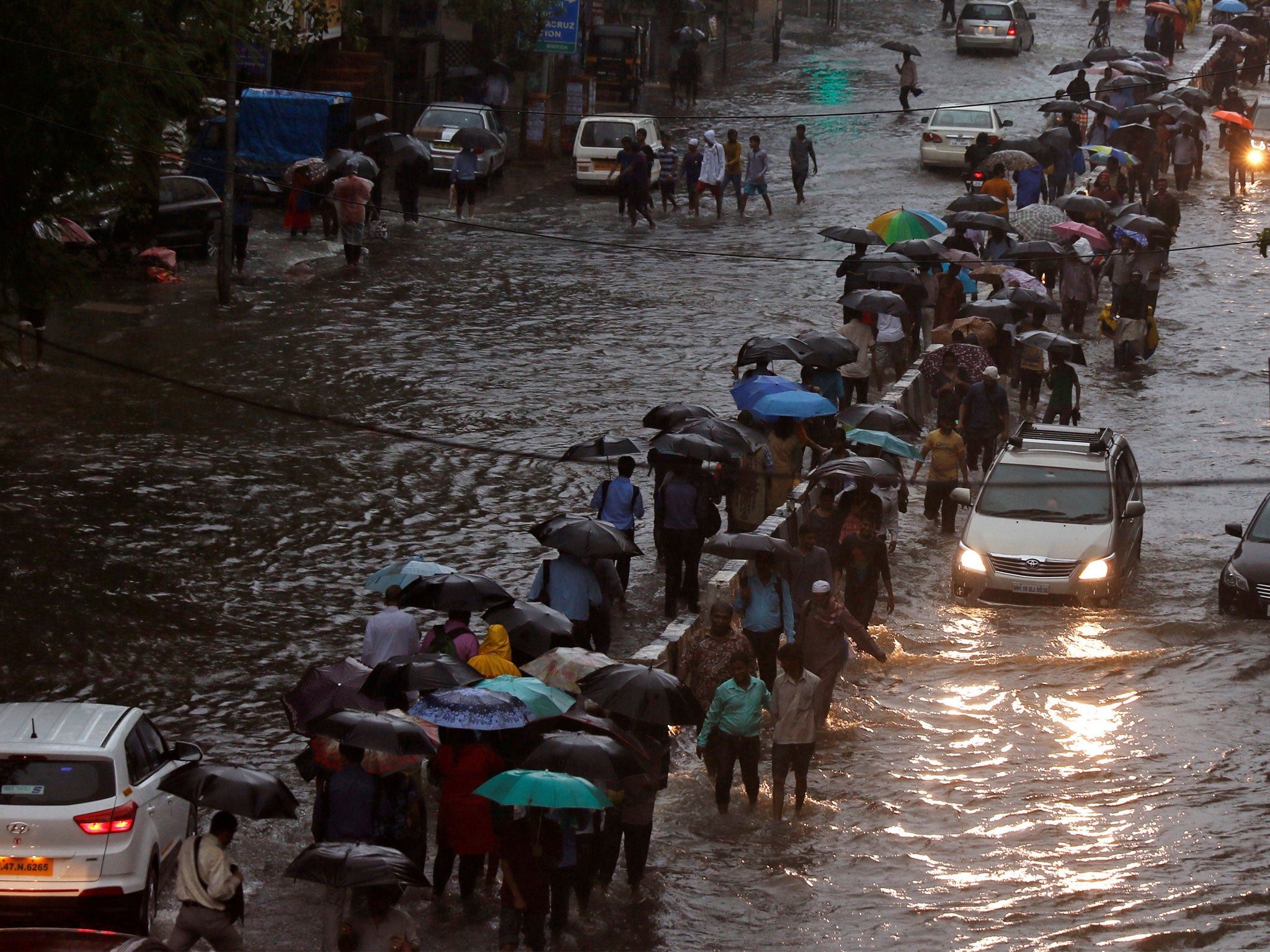South Asia floods: Two million children shut out of schools by disaster
At least 18,000 schools damaged or destroyed across Bangladesh, India and Nepal

Your support helps us to tell the story
From reproductive rights to climate change to Big Tech, The Independent is on the ground when the story is developing. Whether it's investigating the financials of Elon Musk's pro-Trump PAC or producing our latest documentary, 'The A Word', which shines a light on the American women fighting for reproductive rights, we know how important it is to parse out the facts from the messaging.
At such a critical moment in US history, we need reporters on the ground. Your donation allows us to keep sending journalists to speak to both sides of the story.
The Independent is trusted by Americans across the entire political spectrum. And unlike many other quality news outlets, we choose not to lock Americans out of our reporting and analysis with paywalls. We believe quality journalism should be available to everyone, paid for by those who can afford it.
Your support makes all the difference.Severe flooding and landslides in Bangladesh, Nepal and India have prevented around 1.8 million children from attending schools across the region.
At least 1,200 people have been killed in South Asia’s worst flooding in years, with more than 40 million affected.
Thousands of schools are being used as emergency evacuation shelters and at least 18,000 have been damaged or destroyed by the floods, which is putting children’s education and long-term well-being at risk, Save the Children has warned.
Hundreds of thousands of children could fall permanently out of the school system if education is not prioritised in relief efforts.
“We haven’t seen flooding on this scale in years and it’s putting the long-term education of an enormous number of children at great risk,” said Rafay Hussein, Save the Children’s general manager in India’s Bihar state.
“From our experience, the importance of education is often undervalued in humanitarian crises and we simply cannot let this happen again. We cannot go backwards.
“We know that the longer children are out of school following a disaster like this the less likely it is that they’ll ever return.”
Humanitarian organisations have warned the disruption of education services could severely impact children’s well-being in the future, as schooling is crucial in sheltering children from exploitation.
“School is the absolute best place for children to be, acting as a protection mechanism against things like child labour, early marriage and child trafficking, which can occur in times of emergencies like floods, when poor communities are pushed to the brink,” said Mark Pierce, Save the Children’s country director in Bangladesh.
“School also supports children’s emotional recovery, providing a sense of normality and routine and a place to be with their peers.”
The death toll is continuing to rise, alongside concerns over disease and food insecurity.
One woman, who has not been named, said her community in the Gaibandha district of Bangladesh had been caught off guard by the floods.
“The flood water suddenly came and washed away our houses, it all happened within a day,” she said.
“There was no preparation at all, no dry food – nothing. Now the most important need is the safe drinking water.
“We left houses and took shelter in some flood shelters. All our toilets have been submerged. People started defecating in the running water, flood water.”
India’s coastal city of Mumbai is the latest to be affected by flooding, with at least seven people killed after a building collapsed downtown.
Torrential monsoon rains have also hit the city of Karachi in Pakistan, where schools have been closed as a precaution.
Around 2,000 schools in Nepal and 4,000 in Bangladesh have been destroyed or damaged.
Join our commenting forum
Join thought-provoking conversations, follow other Independent readers and see their replies
Comments